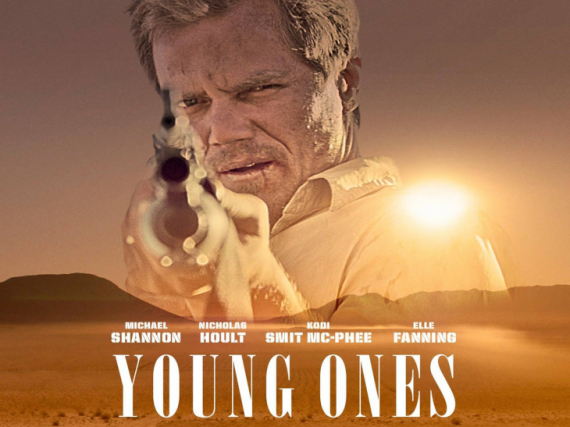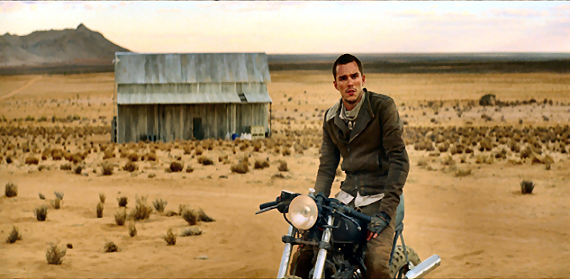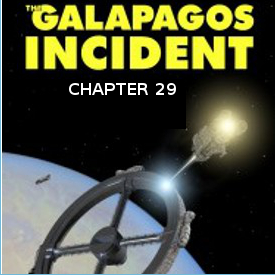
NASA keeps sending landers to Mars, which (IMO) is a Good Thing. An even Better Thing is that when they do, they often, or usually, attach chips to said landers containing lists of names of ordinary people. The previous mission, Orion, carried 1.3 million names on a microchip (https://mars.nasa.gov/participate/send-your-name/orion-first-flight/), and one of the Mars Rovers carried two chips with millions of names (Figure 2). My family was fortunate to have its names on one of the earlier missions—I think it was one that crash-landed—but as far as I’m concerned, you can never be on Mars enough! So I submitted my name and the names of my family, to the next Mars mission—Insight, which will attempt to probe Mars’s interior—which will launch from Vandenburg in March, 2016. Unfortunately, I learned about the mission only a few short hours before they cut off entrants, so it’s now too late to get your name on the mission; I’m sorry about that. (See Figure 3.) But you can put your name in at NASA to be notified of other missions!

Okay, like a couple of well-known old SF TV programs (and no, you won’t get trivia points for knowing these quotes—you’re SF [or “sci-fi”] fans and are expected to know this stuff), my reviews tend to blur the line “between science and superstition,” and also reach “from the inner mind to the Outer Limits.” Or at least I hope they do. In any case, I’d like to talk about a new book and an old movie (well, not that old; it’s from 2014, but I had never heard of it until a few days ago), for your SFnal edification. Or gratification. Or something.

The new book is an anthology, called Alternate Hilarities Weirder Science from Giovanni Valentino (he’s apparently the editor and publisher, as I couldn’t find a publisher’s imprint on the review PDF); and it’s available from Amazon.com and probably Amazon.ca as well (https://www.amazon.com/Weirder-Science-Alternate-Hilarities-Volume/dp/0996647813). It comprises thirty-four varied stories from various authors about weird science or scientists. And most of them are funny! (Hey, I’m a big proponent of funny SF; much of what I personally write is funny—or I hope it is—and some of my favourite authors are funny authors, like Spider Robinson and Eric Frank Russell.) Now, the paperback is $13.50, but the Kindle edition is only $1.98 right now! That works out to just under six cents a story for the Kindle edition, and thirty-nine cents (plus) each for the paperback, not counting shipping. Oy, such a deal! How can you resist a bargoon like this?

Okay, not every story hits the mark: the final story (by the editor), for example, is an extended Doctor Who parody that seems a bit limp to me, but then I’m not a Doctor Who fan (Gasp! Sacrilege!), having missed out on it when I was younger. There is one “first contact story”—no plot, really—that seems just to be a series of SF puns; it didn’t really strike me (“Shaggy Alien Stories” by John H. Dromey).
The writing in this book is somewhat uneven, but there are gems if you look for them: there’s a Greg Costikyan reprint from Aboriginal SF (1988), with uncredited artwork (tsk! tsk!) called “They Want Our Women”; and a quite good short-short from Gregg Chamberlain detailing a couple of Sigmund Freud’s encounters with our genre, called “A Strange Case Study” (Hey! Strange coincidence of names, don’t you think?)
One comment: someone is credited in the colophon as being a “line editor,” but the copyediting is very uneven. I’ve noticed this with a lot of small-press books; I’m not sure whether it signifies a general decline in the quality of copyeditors (I know, most people don’t think proper grammar and spelling are significant, but I’m kind of old-school in my thinking. I grew up in a time when teachers—especially English teachers—actually taught in the classroom. I’ve witnessed real teachers on TV—on news programs about schools—who don’t seem to have a terrific grasp of English either.) This is just an observation, and not meant to detract from the book’s stories.

And now we come to my movie review: this movie’s called Young Ones, and I found it on Netflix. It came out in 2014, and was written and directed by none other than Gwyneth Paltrow’s younger brother Jake Paltrow. It’s an odd collaboration—an Ireland/South Africa production, but it all works. (It’s an “indie” film; the only “name” stars are the three main actors: Michael Shannon (Boardwalk Empire, Man of Steel, The Iceman), Nicholas Hoult (Mad Max: Fury Road, X-Men: Days of Future Past, X-Men First Class) and Elle Fanning (Maleficent, Super 8, Déja Vu); the rest of the cast is Irish, South African, Australian, etc. (I must note again—it seems practically every English-speaking actor in the world can do it—that their American accents are near-flawless; I only caught one slip, and that was the non-American pronunciation of “distribute”—we Americans say “dis-TRIB-yoot,” and practically all other English-speakers say “dis-trib-YOOT.” When I first moved to Canada, it threw me a bit to hear people say “Myoo-ni-SIP-al” instead of “Myoo-NIS-ip-al” for “municipal. As they say, the acCENT was on the wrong sylLABle.)
Shannon plays Ernest Holm, a hard-scrabble farmer living in a future America—the exact location is never mentioned—where water is such a precious commodity that people are willing to kill for it. (Although there is some violence in this movie, it’s not the main focus; Shannon’s struggle, and his children’s struggle, is.) He has a son, Jerome, who’s “fourteen and a half,” and a daughter, Mary (age not mentioned, but Fanning herself was born in 1988, which would make Mary 16). Holm’s wife, Katherine, is in a hospital with missing legs and a spinal injury that means she must wear a harness to allow her to move any part of her body. It appears—from spoken clues given during the film—that she was a victim of her husband’s drunkenness in some manner; Holm himself is on the wagon. The Holm family ekes out a precarious living thanks to Holm’s deliveries of supplies and mail, via donkey, to a nearby irrigation crew that is bringing water to townships and the occasional rich farmer. Holm has a well that is on the verge of drying up; he keeps the pump room locked. He’s convinced that with enough water, his land would be fertile again, and wheat would again be a cash crop to sustain his family.
He has apparently homesteaded his land, which was once the property of Sam Lever, who has money, gained by doing whatever is necessary: racing pigeons, selling used farm equipment. According to townspeople, Sam’s land was poisoned years ago by the application of too many chemicals. His son, Fleming—Flem Lever—resents Ernest for what he views as the theft of his family’s land, although that resentment doesn’t stop him from courting Holm’s teenaged daughter. That daughter resents her father for keeping her cooped up—doing laundry and washing dishes with sand—and escapes with Flem whenever she can manage it. Jerome spends much of his time up in his room—in a house built mainly of steel shipping containers—drawing pictures. At one point, Holm and Jerome have to confront some would-be water thieves, who are breaking into his pump house, and he has to shoot both of them in self defense. Shortly thereafter, his well runs dry.
Holm takes Jerome with him on a trip across the foothills to the irrigation/mining crew, but on the way, their donkey trips on a rock and breaks a leg. They manage to make their delivery after shooting the donkey, but since this is now Holm’s only source of income, he is forced to buy a second-hand robotic carrier (four-legged), outbidding Sam’s son, Flem. Flem comes to him later and tries to rent the carrier, saying that they could share in the profits from the miners/irrigators. Holm turns him down, but during the night, Flem steals the machine and heads up the mountain, leading to a confrontation between the two.
*SPOILER ALERT* Skip this paragraph if you don’t want to know about a couple of key scenes. Holm and Flem have a confrontation; Flem has stolen the miners’ supplies and is planning to sell them “across the border” (apparently these supplies, including a very large quantity of liquor, are worth three times their value as bootleg supplies); the miners think Holm has stolen them. Holm refuses to drink the stolen water, instead drinking the liquor; while he is drunk, Flem throws a rock at his head, accidentally injuring him badly. He ties Holm to the carrier while he is semi-conscious and sets the carrier in motion towards the mine/irrigation site up in the mountains… and the carrier drags him to his death.

*Back to non-spoiler*The movie plays out very well; Flem proves to be a very bad guy, with a number of awful things to his credit; he succeeds in marrying Mary and acquiring Holm’s land, and the rest of the movie plays out as you might expect. The movie is not fast-paced; it’s not an “action” movie in the usual sense, although there are definite scenes of action and violence. The cinematography is smashing—there’s a definite “big sky” feeling to the land. The acting is more or less low-key—Elle Fanning gets to show a larger range than she did in Maleficent; Nicholas Hoult is convincing as the bad guy, and Jerome (Kodi Smit-McPhee, a young Australian actor) makes us believe his evolution.
I should also mention the special effects. According to the credits, the carrier robots (I’m assuming) are a combination of animatronics and puppetry. Absolutely fabulous! You will believe they are real! And Katherine Holm’s spinal prosthesis is likewise convincing, as are the scenes of wheat growing in what was previously dusty, bare soil. Altogether, I think this movie should have had a lot more publicity in the SF community, as it’s pure SF, sort of combined with a traditional Western.
I’d appreciate a comment on this week’s column if you feel like it. You can comment here or on my Facebook page, or in the several Facebook groups where I publish a link to this column. Whether or not I agree with your comment, all are welcome, so don’t feel you have to agree with me to post a comment. Oh, yeah, and my opinion is, as always, my own, and doesn’t necessarily reflect the views of Amazing Stories or its owners, editors, publishers or other bloggers. See you next week!










